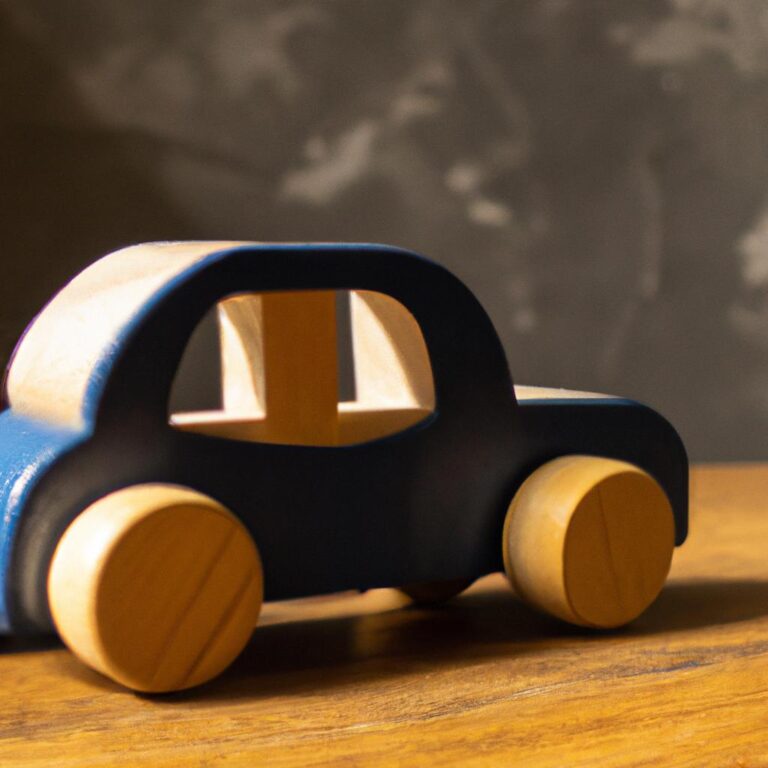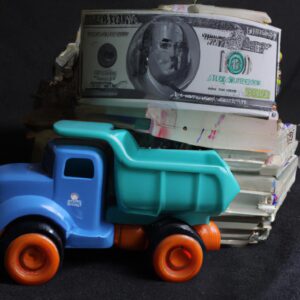Introduction to Sustainable Toys
Sustainable toys are important because they focus on providing children with eco-friendly alternatives that help reduce pollution and waste. Eco-friendly choices are beneficial because they protect the environment and can often be used multiple times or recycled, rather than trashed like plastic toys. For conscious consumers who care about the impact their shopping habits have on the environment, sustainable toys are a great choice.
Definitions
Sustainability is the practice of creating and using goods that can be maintained over time without harming the environment. It involves things like conserving resources, reducing waste, and minimizing pollution.
Eco-friendly, more formally known as “environmentally friendly” or “green”, refers to goods and services which cause little or no harm to the environment. When talking about toys, this often means toys made from natural or recycled materials and produced in a way which keeps energy consumption and emissions low.
A conscious consumer is a person who takes an active role in their purchases and carefully considers each decision they make. They research companies they buy from and look out for ethical production methods. They strive to make sure their money goes towards supporting sustainable brands which have a positive impact on the world.
Types of Sustainable Toys
When shopping for eco-friendly toys, there are many different types to choose from. Here is a look at some of the most popular sustainable toy options and what makes them special:
- Wooden Toys: Wooden toys are made with sustainably sourced wood, often from FSC-certified forests. They are durable, safe, and last longer than plastic toys. Toys made from wood also promote emotional development as children learn to explore, experiment, and create.
- Upcycled/Repurposed Toys: Upcycling is the process of reusing old objects and giving them a new purpose. Repurposing toys is an excellent way to reduce waste and make use of materials that would otherwise be thrown away. This includes giving toys a unique makeover or converting them into something new.
- Battery-Free Toys: Battery-free toys are powered by movement rather than electricity, making them an environmentally friendly option. These toys require no batteries to operate, eliminating the need to purchase and discard them when they’re no longer needed.
- Organic/Natural Toys: Organic toys are free from toxic chemicals and made without the use of pesticides or synthetic fertilizers. Natural toys are also a great option since they are made from renewable materials, such as cotton, wool, and hemp.
In addition to these popular types of sustainable toys, there are also many other eco-friendly options available. Consider doing some research to explore all of the different choices. You may be surprised at the creativity and innovation behind these products.
Alternatives to Plastic Toys
When considering toys for children, it is important to look for sustainable and eco-friendly options. Plastic toys may seem convenient, but their production process is damaging to the environment and they often don’t last very long. Instead of plastic, look for more sustainable options that are better for both your child and the planet.
Some great alternatives to plastic include:
- Wooden toys: Sturdy and built to last, wooden toys are a great option as they don’t contain any potentially hazardous chemicals or materials. Look for products that are ethically sourced from sustainable forests.
- Upcycled/repurposed toys: Reusing materials that already exist is a great way to go green. All sorts of materials can be used to make playful and engaging toys, such as fabric scraps, plastic containers, and other found items.
- Battery-free toys: As opposed to battery-powered toys, these use an inexhaustible source of energy, like kinetic energy, which makes them more environmentally friendly.
- Organic/natural toys: These are typically made with natural materials such as cotton, wool, or wood. Whenever possible, look for organic certified products that have been grown and processed in an ecologically friendly manner.
By choosing eco-friendly alternatives, you can help reduce pollution, waste, and emissions, while also supporting ethical production methods. This will benefit not only your own family, but the planet as well.
Materials
When it comes to Eco-friendly toys, sustainable materials are the key. Thankfully, there are plenty of natural materials out there that can be used to make sustainable toys. Some popular materials include wood, rubber, and natural fabrics.
Wood is one of the most common materials used in eco-friendly toys. Wood has the added benefit of being a renewable resource, which means that it can be easily sourced from sustainably managed forests. Wooden toys are also very durable and long-lasting, making them a great choice for conscious consumers who want to buy ethically produced products.
Rubber is another popular material for sustainable toys. Rubber is a versatile material that can be used in a variety of ways. It is soft and durable, making it an ideal choice for kids’ toys. Additionally, rubber is a renewable resource and can be sourced from trees or recycled tires.
Natural fabrics are a great option for those who prefer a more tactile experience. Natural fabrics are typically made from cotton, wool, or hemp and have the added benefit of being biodegradable. These fabrics are also often eco-friendly, as they are usually produced using sustainable practices.
The materials discussed above are just some of the many options available when it comes to sustainable toys. There are plenty of other eco-friendly materials out there, such as bamboo, jute, and upcycled plastics. By researching sustainable materials and supporting ethical production methods, conscious consumers can make sure that their purchases are good for the planet.
Workshop Visits
You can gain valuable insight into the production of sustainable toys by visiting workshops. Visiting a workshop allows you to get a firsthand look at how sustainable toys are made and ask questions about the process. You can learn about the materials, tools, and machinery used, and even meet the people behind the toys.
Furthermore, you can support local craftsmen and businesses by purchasing their products. Most workshops operate with a ‘pay-it-forward’ system, meaning that when you buy a toy, you are also helping support the livelihoods of those who make them. By doing so, you are contributing to a sustainable economy.
Visiting a workshop can be a great way to gain knowledge about sustainable toys and make informed decisions about what to buy.
Pros and Cons of Sustainable Toys
When considering sustainable toys, it is important to consider both the advantages and disadvantages. To provide a holistic view of what to expect from them, we’ve outlined some of the pros and cons below:
Pros
- Eco-friendly materials used in production reduce environmental impact, such as waste and emissions.
- Support of ethical production methods, such as using renewable energy and avoiding hazardous chemicals.
- Longer life spans, as materials such as wood can last generations with proper care
- Potential for jobs creation and economic growth.
Cons
- Can be more expensive than plastic alternatives.
- For some materials, there may be limited availability.
- May require extra effort to find reputable manufacturers and/or retailers.
- Can be difficult to repair or replace parts, depending on the material.
It is important to weigh the pros and cons carefully when deciding whether sustainable toys are right for you and your family.
Benefits of Buying Sustainable Toys
Sustainable toys offer numerous benefits to conscious consumers, including reducing pollution, supporting ethical production methods, and promoting a healthy environment.
The first benefit is that sustainable toys help reduce pollution by using materials such as wood, rubber, and natural fabrics, rather than plastic. This means that fewer toxins are released into the environment, thus helping to preserve our planet and its resources for future generations.
Additionally, choosing sustainable toys also supports ethical production methods and promotes a healthy working environment. Most sustainable toy manufacturers follow Fair Trade standards and ensure that their workers are treated fairly and offered competitive wages. Additionally, these manufacturers often use renewable energy sources, such as solar or wind power, which further helps protect the environment.
Finally, investing in sustainable toys can make a huge difference to the environment. By using eco-friendly materials, these toys have a significantly lower carbon footprint than traditional plastic toys. Moreover, these toys are often made from recycled materials, which means that fewer resources are used and less waste is produced.
It’s clear that buying sustainable toys is a great way to help the environment while still providing your children with playthings that are fun and exciting. So, if you’re looking for a way to make a positive difference, consider investing in sustainable toys and supporting ethical production methods.
Consumer Tips
When it comes to buying sustainable toys, there are a few things that consumers should keep in mind. To ensure that the toys are of good quality and ethically produced, it’s important to research reputable companies and examine their production processes. Consumers should reach out to manufacturers to learn more about the materials used and the sustainability efforts of the company.
Consumers can also look into visiting workshops to get a better understanding of how sustainable toys are made and support local craftspeople. Additionally, it’s always a good idea to read customer reviews and see what other buyers are saying about the toys.
Finally, it’s important to remember that investing in sustainable toys is an investment in the environment. By opting for eco-friendly choices, consumers can help reduce emissions and pollution, as well as support ethical production methods.
Impact on the Environment
Sustainable toys not only promote ethical production, but also reduce waste and emissions. By choosing eco-friendly toys, you are helping to limit the amount of plastic that is used and disposed of. This is beneficial for the environment, since plastic takes centuries to decompose, and can cause many issues when released in water sources. Sustainable toys also require fewer resources to produce, reducing the amount of energy consumed.
These toys are typically made from natural materials like wood, rubber, organic fabrics, and recycled materials, which are biodegradable and require less energy to produce. Buying sustainable toys helps to promote responsible manufacturing procedures, such as avoiding harsh chemicals and hazardous methods. Furthermore, it supports small local businesses, allowing them to thrive and create more sustainable products.
The Importance of Sustainable Toys
Sustainable toys are an important and eco-friendly choice for conscious consumers. Toys made from sustainable materials can help reduce waste, emissions and other pollutants, as well as support ethical production methods. Choosing sustainable toys helps to improve our environment and preserve our planet for future generations.
Eco-friendly toys are typically made from wood, rubber, natural fabrics, and other natural or recycled materials. These toys are often battery-free and minimize the use of plastic. Many sustainable toys are handmade by dedicated craftsmen who take pride in their work. When buying sustainable toys, it is important to research reputable companies and reach out to manufacturers to make sure the products are truly sustainable.
In addition to being more environmentally friendly, sustainable toys have numerous benefits. They encourage imaginative play, help promote safety, and are usually more durable than plastic toys. Buying sustainable toys can also help create more jobs for local workers, and may even help support artisans in developing countries.
Overall, buying sustainable toys is the best way to make sure that the toys you buy are not only good for your child but for the environment too. Sustainable toys are an excellent example of how we can all make a positive contribution to our planet and ensure that our children get to enjoy a future full of possibilities.
Resources for Sustainable Toys
For those who wish to learn more about sustainable toys, there are plenty of resources available that can be referred to. Here are some of the top sources that conscious consumers can look into:
- Websites: There are many websites that provide information about sustainable toys, including their types, materials, and other features. Examples include Eco-Toy Lab, Green Sprouts, and Natural Pod.
- Blogs: There are countless blogs out there dedicated to sustainable toys, such as A Sustainable Life, To Buy or Not to Buy, and Our Little Eco Family.
- Magazines: Several magazines feature articles about sustainable toys, which can be especially helpful for those just starting out. Popular titles include Natural Parenting Magazine, Green Living Magazine, and EcoKids Planet.
Doing research is key to finding the right sustainable toy. Taking the time to read up on the available resources, do comparisons, and ask questions can ensure that conscious consumers make an informed decision when it comes to sustainable toy purchases.
comments: 0





